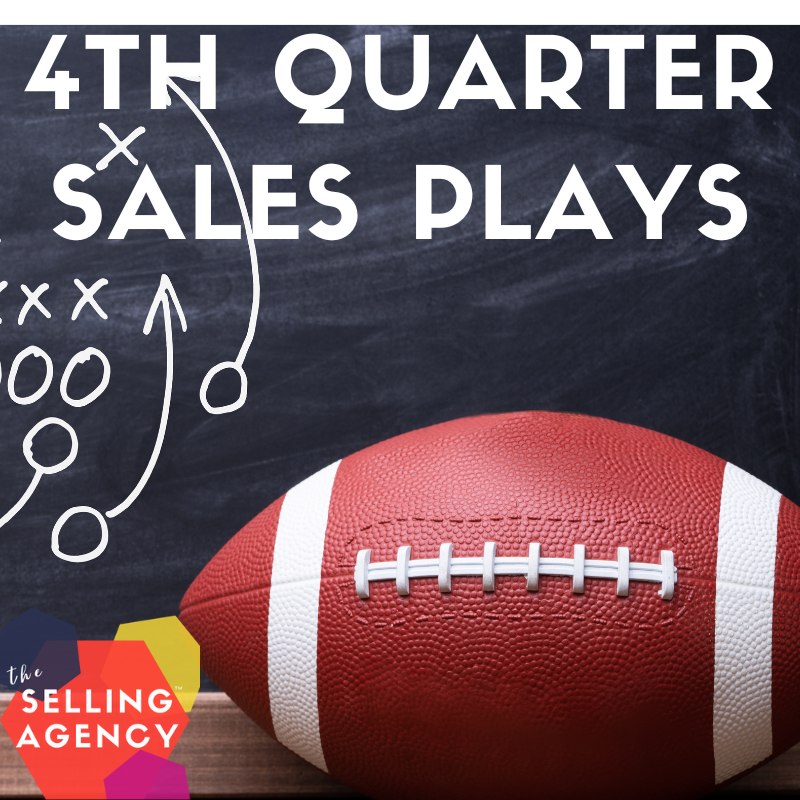It’s a brand spanky New Year. As most people are, you’re probably pumped to put the last year behind you. The New Year always feels like a clean slate – full of promise and possibilities.
Many of you may have plotted out budgets, planned expenses, or set goals and perhaps cemented your strategies with a documented plan on your whiteboard.
Goals are great. Planning is perfect. Strategy is smart.
But now what?
Now, it’s time to EXECUTE.
Your ability to execute your sales strategy is the difference between surviving and THRIVING.
Execution is one of the hardest business disciplines to master. “The Plan” is usually the first thing to go out the window when we get busy . . . or desperate. Add to that our need for immediate gratification and we don’t usually have a lot of patience for the time and persistence it takes to fully implement and execute a strategy.
And, what looks good on paper is much harder to put into action in real-time. Various studies report organizational failure rates at implementing and executing strategy are extremely high – averaging between 60 and 90 percent (Kaplan & Norton 2005).
What does successful execution mean to you?
If you’re a sales pro or sales leader, it means achieving quota, earning a bonus, or “making the trip” – possibly more important, it means you’re securing your organization’s position in the market and with your customers.
If you’re a business owner, it can mean gaining the cash flow to expand, make capital investments, or position for a sale – ensuring your ability to thrive in the most competitive markets or industries.
And for either of you, successful execution of your strategy means you keep your competitors from OUTselling you – making you a complete selling badass!
Keep your strategy visible and your plan in front of you now while you go through your “Execution Checklist” – to ensure your next quarter, next year is one where you THRIVE!
3 Keys to Better Sales Execution:
Tools – What do you need to implement and execute your plan?
Go-To-Market-Strategy – Keenly zero in on WHO you’re going to target and convert, WHERE do you find them, and HOW you’re going to reach them. While you’re at it, design your strategy to answer the questions: Why would they choose you over someone else and how can you deliver value consistently? Showing up differently than your competitors can create a distinctive competitive advantage for you.
Processes – Yes, processes are here in tools. Sales processes and operations processes support the efforts to acquire the customer and your customer’s experience. The documentation and consistent execution of a process is how you are able to achieve consistent results and scale efforts. Most lagging sales programs – especially in small businesses, do NOT have a documented sales process. Documenting how you execute your strategy is a playbook you can turn to for continued success. Write the plays, practice the plays, coach the plays – and you’ll have a winning season.
Organizational Tools – Keeping you focused, moving forward, and organized, there are hundreds of apps and programs that you can use to make you more productive and efficient. You should be using a CRM to organize your contacts and prospects, prompt your selling activities, communicate with templates, and respond to triggers. There are information programs to help you prospect more accurately, communication tools to improve your social selling efforts, and focus tools to boost your productivity. Successfully executing is a game of consistency and leveraging the right tools can help you play the game better! We spend a great deal of time researching and testing tools for our clients and flatten the curve of their learning process. The right tools and technology can improve communication and success rates.
Talent – What skills do you need to execute your plan?
Communication – The cornerstone of effective selling, if you stink at articulating your ideas and compelling people, you’re going to stink at selling. That’s why we study communication from every angle of the buyer’s perspective. For instance, body language can account for up to 80% of communication, Tone, 15%, and words, 5%. Communication requires mastery of body language, presenting skills, verbal, and written works. Salespeople (in our experience) do not spend enough time (if any!) practicing, editing, and performing their communication efforts so that when they are in front of customers or buyers, they’re not “Winging It.”
Collaboration – Who in your organization is key to earning and keeping customers? Do you have a marketing team? How are you communicating your needs to them? Are you working together to create customer-focused messages for every part of the buyers’ process? What about your operations partners? Do you have a team that you can introduce to your customers to gain more buy-in or advance the sale with their expertise? Leverage your marketing and operations partners as a critical part of your selling efforts. They can help you be more efficient, productive, and provide a rock star experience for customers. In every sales position I’ve had, I’ve leveraged my Customer Service Reps, Operations Managers, Production Supervisors, and Directors to bring their expertise and personalities to my prospective buyers. Customers get insight into what it’s like to work with you and your team. Collaborating with your colleagues as well as your clients – it demonstrates how you’ll go to bat for the right solution for your customers.
Commitment – How do you stay consistent in your execution?
Internal Operating Agreement – Different than SOPs (Standard Operating Procedures), developing an internal operating agreement with your team or even with yourSELF documents how you will prioritize your strategy and its execution. For example, our blog and newsletters, and social media are critical components to communicating with our audience and future clients. It’s a key piece of pipeline development and we prioritize it no matter what. Stuff happens: sick children, the flu, vacation, conferences . . . but blogs go live every week, newsletters drop every single week, no matter what. Our Internal Operation Agreement outlines our content calendar – WHAT, WHY, & WHO we write for, and our working timeline. Our operating system and sales process distinctly spell out who is responsible for contributing to the process and how we keep each other accountable. Breaking this internal policy is out of the question. We prepare and prioritize this event in our entire organization.
Measure, Test, & Tune – No idea on paper is worth dying over if it’s not working. Being committed to the execution means you fine-tune as you go so you can continue to see results instead of abandoning your entire strategy. It’s easy to throw your hands up and say “Well, that didn’t work” and then stop executing. However, when you implement your sales strategy, if you determine which benchmarks you’ll measure, you can understand how you’re progressing or where you’re missing the mark. For sales pros, measuring activity-based outcomes – rather than quota achievement can help you make adjustments quickly to keep you moving forward. For businesses, taking note of trends, growth, retention, wins, and losses in a more incremental capacity give you the ability to pivot more quickly than looking at quarterly reports. Determine what tools (CRM, reports, et cetera) you’ll use and what you’ll measure so you can zig and zag more like a sailboat tacking instead of a freight liner turning.
Make all the New Year’s resolutions you want. Ambitiously growing sales or beating your sales targets are inspiring goals but just like the most common resolutions – losing weight, running a marathon, or saving money – these ambitions require diligence in execution to attain.
Some of the best advice I’d ever received was from a VP of Sales who said, “Be accountable to the plan, not the results.” When you prioritize the execution of your strategy, makes those results much more attainable.
Until next time, stop hoping, start SELLING!
-sks










